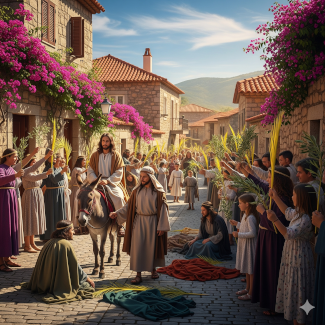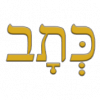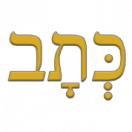How was Time Kept in Jesus Era
The reason I started this article was to confront the the last week of Jesus’s Life. It became clear that much was needed to even start talking about that last week. Jesus’s last week of life has been hotly debated for centuries and more so today. I am not here to solve the great debate. But I am going to offer my option. I will base as much as I can on scripture. I will also suggest that some modern translations have added, even more problems. I would ask that you grind through the first part of this because it sets the stage for proper interpretation.
One Day to the Next
To begin our journey, we must understand how days and times were referenced in Jesus’s ear. We need to understand when a new day begins and ends. Today we work off a 24 hours clock that begins and ends at 12 AM. Of example the last minute of the 14th day would be 11:59 PM. While the first minute of 15th day would be 12:00 AM.

At the time of Jesus there were no mechanical clocks. The Hebrew Calendar it is a lunisolar calendar combining both lunar cycles for months and solar cycles for years. With a new day starting at the setting of the sun. So the last moment of the 14th day would be just before the sun sets. The first moment of the 15th day happens just after the sun sets.
This understanding of the Hebrew Calendar helps answer many questions that arise, including Jesus’s resurrection.
Morning, Day, Evening, Night.
The next path leads us to the way people of Jesus’s era would have refer to different parts of the day. Again in comparison to modern times, we use different terms for parts of a day.
Morning – 12:00 AM – 12:00 PM,
Afternoon – 12:00 PM to 5:00 or 6 PM,
Evening – 5:00 PM to Night,
Twilight – 5:00 – 7:00 (AM or PM)
Dusk – 5:00 PM to 7:00 PM
Night – The time when there is no light from the Sun.
Compared to Jesus’s time…
Morning – first light from the sun until the heat of the day.
Afternoon – a word not directly mention in the scriptures. (will talk about this later)
Evening – sunset until night
Twilight – not a Hebrew word – but a time between sunset and darkness or between darkness and sunrise.
Night – The time when there is no light from the Sun. Darkness
Lets dive a little deeper so clarity is maintained.
Twilight
I start here because some modern translation have decided to use the word Twilight for the time the Passover meal is eaten.(see Passover) Twilight is not directly wrong but misleading. Because the word twilight can reference to different times during a given day. As mentioned above, Twilight can refer the early morning hours or the late evening hours. A time just after the sunset until darkness. Or a time just before the sunrises, from darkness until sunrise.
This discrepancy had lead some to think the Passover meal was a morning event, falling sometime between darkness and sunrise. This has also lead people to saying that the Last Supper was not a Passover meal (even though that is was Jesus called it). For quick reference the Passover meal was to be eaten at evening of the 14th; more specific the evening between. But some modern translation changed it to the twilight of the 14th. Creating confusion.
The Evening Between
Exodus 12:6 – This where the instructions for killing the sacrifice are explained. The first introduction of the Passover meal, which starts the seven day Passover Festival known as The Feast of Unleavened Bread. In Hebrew בֵּ֥ין הָעַרְבָּֽיִם directly translates as “the evening between”. So the lamb was to be offered at the “evening between” the 14th and the 15th. KJV translates this as “the evening”. ESV and most other modern translations have adopted word “twilight”. Again “twilight” is not wrong but misleading.
In my option is should have been left to its raw translation “the evening between”. Between what you may ask? Between the days. As discussed at the start of this article a day begins and ends at sunset. This would be the crossover or the “between” moment of the two days. If you just leave “evening” in there you know it is not a morning event. Modern translations made a mistake that has created confusion where there was none.
Hours of the Day
- The Third Hour:
Roughly equivalent to 9:00 AM. The crucifixion of Jesus is sometimes described as occurring at the third hour, marking the beginning of the crucifixion.
- The Sixth Hour:
The sixth hour was noon. A significant event in the Bible, such as the darkness at Jesus’ death, is described as lasting from the sixth hour to the ninth hour.
- The Ninth Hour:This was mid-afternoon, or around 3:00 PM. Jesus’ death is described as happening at the ninth hour.
Biography:
Brown, F., Driver, S. R., & Briggs, C. A. (1906). The Brown-Driver-Briggs Hebrew and English lexicon.
London, Bagster. (n.d.). Hebrew and chaldee lexicon to the old testament scriptures; translated, with additions, and corrections
from the author’s thesaurus and other works : Gesenius, Wilhelm, 1786-1842 : Free download, Borrow, and streaming. Internet Archive. https://archive.org/details/hebrewchaldeelex00geseuoft/page/n15/mode/2up
Strong, J. (1996). The new Strong’s exhaustive concordance of the Bible. T. Nelson Publishers.
Wigram. (1980). The Analytical Greek Lexicon of the new testament. Associated Publiers
Wigram, G. V. (1996). The Englishman’s Hebrew Concordance of the Old Testament: Coded with the numbering system from Strong’s exhaustive concordance of the Bible. Hendrickson Pub.

